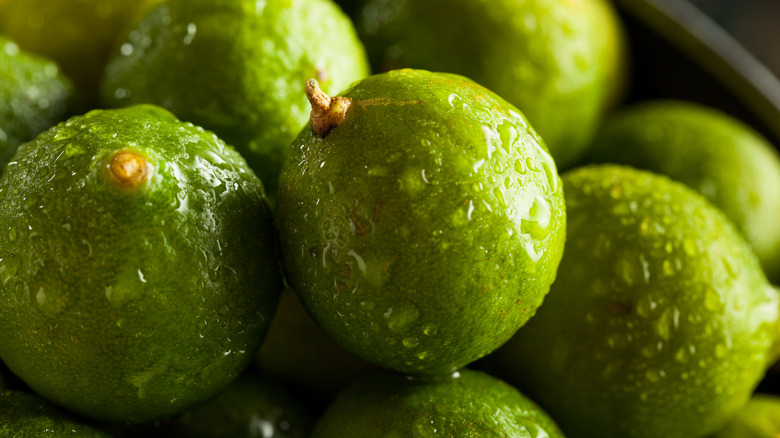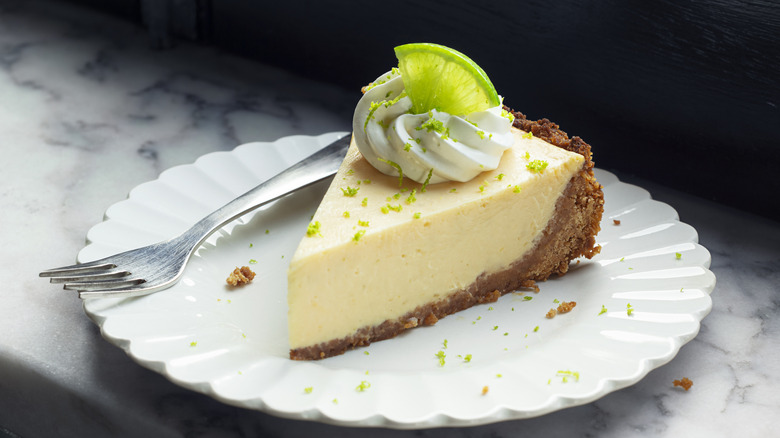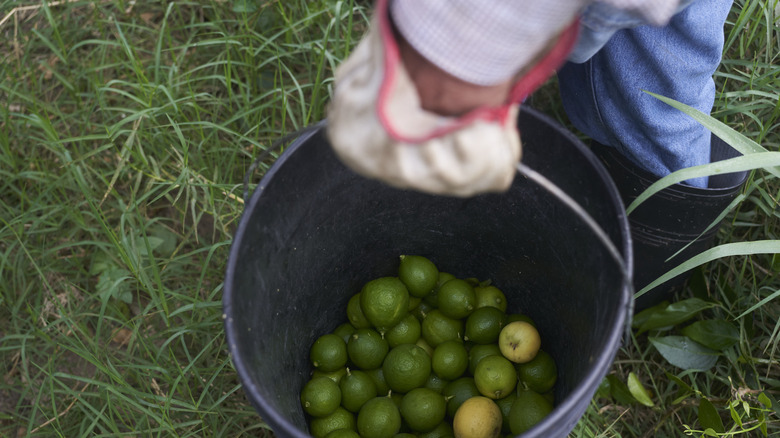How Are Key Limes Different From The Regular Variety?
If you've ever wondered why a key lime pie has a brighter, zestier taste than other lime-flavored desserts, it's because the term "key" lime isn't just a cute name. Key limes are actually different in terms of flavor profile, size, and use in the kitchen from the Persian lime, which is the variety that is typically found in grocery stores and supermarkets.
Key limes, which are also known as Mexican or West Indies limes, are smaller and pack a more tart punch than Persian limes, which most people describe as being more bitter and acidic in taste. They're also spherical in shape and more delicate and aromatic than the hardier, oval-shaped Persian type. However, key limes are also a seasonal fruit and harder to find year-round than other limes. Understanding their unique properties can help you make the most of these special fruits.
Why key limes stand out
When ripe, key limes take on a pale yellow hue that signals that they've reached their full flavor. Inside, key limes also contain more seeds than Persian limes, so they're slightly less convenient for recipes. However, the juice in this fruit is delicious, especially in key lime pie, where its tartness pairs beautifully with sweetened condensed milk and buttery graham cracker crust.
You can't use regular limes in key lime pie; Persian limes lack the pleasant pungency and floral aroma that key limes lend to the dessert, and they just can't balance creamy, sugary ingredients in the same way as the tropical variety. When a dish depends on that bright, citrusy tang — like tarts, pies, or sorbets — key limes are the go-to choice. Key lime juice also enhances flavors in savory dishes, like this panko-crusted fish with key-lime butter, and brightens up all kinds of beverages, like this refreshing lime seltzer cocktail. Though their small size may require a bit more effort to juice and prepare, the unique flavor is what makes key limes irreplaceable in so many dishes.
Where key limes come from and why they're hard to find
Key limes may take their name from the Florida Keys, but their history stretches back much further. Originally brought to the Americas in the 16th century by Spanish explorers, key limes thrive in tropical and subtropical climates like Florida and California. However, the majority of commercial key lime production today takes place outside of the United States: Mexico produces key limes year-round thanks to its warmer climate, making it one of the largest suppliers of this citrus fruit.
The real issue is getting them to markets outside tropical regions. Their thin, delicate skin is easily bruised, making them more perishable (if kept at room temperature, you should try to consume them within a few days) and harder to transport. This fragility also means they're less likely to show up in grocery stores, especially when they're out of season in the U.S.
If you end up being able to get your hands on some key limes , you'll find them delicious and versatile. Persian limes dominate most kitchens, but key limes are still a prized ingredient for those who appreciate their sharp, distinct flavor.


